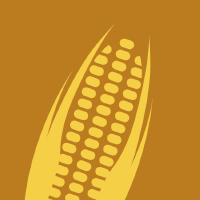Topic Editors



Genetic Engineering in Agriculture, 2nd Edition
Topic Information
Dear Colleagues,
Genetic engineering (GE) relies on the approaches of modern molecular biology to permanently change the genetic makeup of cells. GE is often employed to produce organisms with improved or novel traits, often by transferring genes across species boundaries or making targeted genomic changes. The use of GE ranges from research and medicine to industrial applications and agriculture. As a part of this Topic, we focus on GE applications in agriculture, including crops, livestock, breeding, and more. Historically, GE has been widely used to create insect-resistant and herbicide-tolerant crops. At present, efforts are being made to create a variety of specialty traits, such as improved tolerance to abiotic stress. The genetic engineering of animals has led to various changes, including increased growth, the absence of horns, reduced methane emissions, and more. As GE has enormous potential to change organisms, this Topic is one of both intrigue and controversy. The Topic “Genetic Engineering for Agriculture” provides a platform to publish both reviews (both in support of GE for agriculture and in opposition to its use) and original research papers. Please join us in creating a diverse collection of articles covering a variety of topics. We look forward to receiving your contributions.
Dr. Amy L. Klocko
Prof. Dr. Jianjun Chen
Dr. Haiwei Lu
Topic Editors
Keywords
- genetic engineering
- agriculture
- CRISPR-Cas
- biotechnology
- livestock
- crops
- genetic modification
Participating Journals
| Journal Name | Impact Factor | CiteScore | Launched Year | First Decision (median) | APC | |
|---|---|---|---|---|---|---|

Agriculture
|
3.6 | 6.3 | 2011 | 18 Days | CHF 2600 | Submit |

DNA
|
- | - | 2021 | 20.5 Days | CHF 1000 | Submit |

Genes
|
2.8 | 5.5 | 2010 | 14.6 Days | CHF 2600 | Submit |

International Journal of Molecular Sciences
|
4.9 | 9.0 | 2000 | 20.5 Days | CHF 2900 | Submit |

Plants
|
4.1 | 7.6 | 2012 | 17.7 Days | CHF 2700 | Submit |

Crops
|
1.9 | 2.4 | 2021 | 23.5 Days | CHF 1200 | Submit |

Preprints.org is a multidisciplinary platform offering a preprint service designed to facilitate the early sharing of your research. It supports and empowers your research journey from the very beginning.
MDPI Topics is collaborating with Preprints.org and has established a direct connection between MDPI journals and the platform. Authors are encouraged to take advantage of this opportunity by posting their preprints at Preprints.org prior to publication:
- Share your research immediately: disseminate your ideas prior to publication and establish priority for your work.
- Safeguard your intellectual contribution: Protect your ideas with a time-stamped preprint that serves as proof of your research timeline.
- Boost visibility and impact: Increase the reach and influence of your research by making it accessible to a global audience.
- Gain early feedback: Receive valuable input and insights from peers before submitting to a journal.
- Ensure broad indexing: Web of Science (Preprint Citation Index), Google Scholar, Crossref, SHARE, PrePubMed, Scilit and Europe PMC.
Related Topic
- Genetic Engineering in Agriculture (12 articles)

